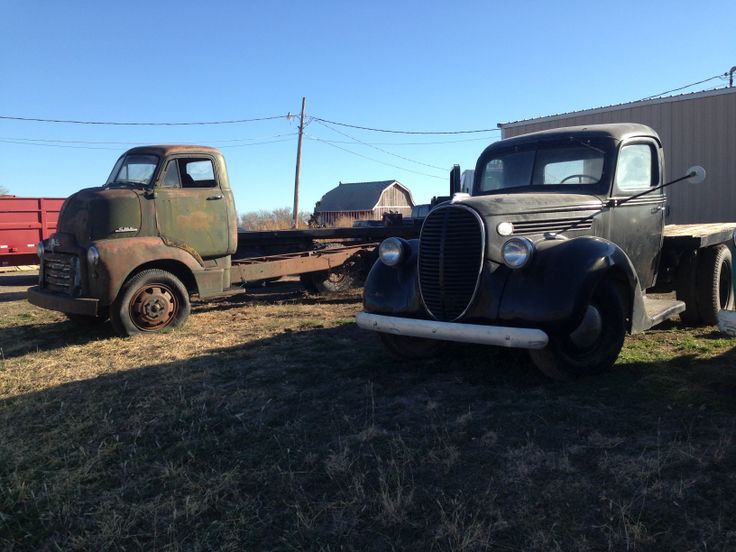Medium Duty Pickup Trucks For Sale: Your Comprehensive Guide to Power and Versatility
Medium Duty Pickup Trucks For Sale: Your Comprehensive Guide to Power and Versatility cars.truckstrend.com
In the vast landscape of automotive choices, the medium-duty pickup truck occupies a unique and highly capable niche. These aren’t your average grocery-getters or light-duty commuters. Instead, medium-duty pickups are the workhorses, the adventure enablers, and the backbone of countless small businesses and demanding lifestyles. If you find yourself needing more muscle than a half-ton truck can offer, but don’t quite require the commercial-grade capacity of a Class 4 or higher, then a medium-duty pickup truck is likely your ideal solution.
This comprehensive guide aims to equip you with all the knowledge needed to navigate the market for medium-duty pickup trucks for sale. We’ll explore what defines these formidable vehicles, who stands to benefit most from owning one, critical factors to consider before purchase, popular models, and practical advice to ensure you make an informed decision.
Medium Duty Pickup Trucks For Sale: Your Comprehensive Guide to Power and Versatility
What Defines a Medium-Duty Pickup Truck?
The term "medium-duty" typically refers to trucks classified by their Gross Vehicle Weight Rating (GVWR) – the maximum operating weight of the truck as specified by the manufacturer, including the vehicle’s chassis, body, engine, fuel, accessories, driver, passengers, and cargo.
Medium-duty pickups generally fall into:
- Class 2b: With a GVWR ranging from 8,501 to 10,000 pounds. While some heavy-duty half-tons might nudge into this, it’s primarily where the lighter end of 3/4-ton trucks begin.
- Class 3: Encompassing trucks with a GVWR of 10,001 to 14,000 pounds. This is the heart of the medium-duty pickup segment, including most 3/4-ton (250/2500 series) and 1-ton (350/3500 series) trucks.
Key characteristics that set them apart:

- Robust Construction: Heavier-duty frames, suspension components, and axles designed to handle significantly more weight and stress than light-duty trucks.
- Powerful Engines: Dominated by large displacement V8 gasoline engines or, more commonly, high-torque turbo-diesel engines. These powerplants are engineered for sustained heavy loads and towing.
- Enhanced Capacities: Superior payload ratings (the weight the truck can carry in its bed and cab) and towing capacities (the weight it can pull behind it) compared to 1/2-ton trucks.
- Specialized Features: Often equipped with integrated trailer brake controllers, advanced towing camera systems, heavier-duty cooling systems, and sometimes dual rear wheels (DRW or "dually" configuration) for maximum stability and towing capacity.
Common examples of medium-duty pickup trucks include the Ford F-250 and F-350 (Super Duty), Ram 2500 and 3500 (Heavy Duty), and Chevrolet Silverado 2500HD and 3500HD, along with their GMC Sierra HD counterparts.
Who Needs a Medium-Duty Pickup Truck?
The versatility and immense capability of medium-duty pickups make them indispensable for a wide range of individuals and businesses:
- Tradespeople & Contractors: Plumbers, electricians, landscapers, carpenters, roofers, and general contractors often rely on these trucks to haul heavy tools, equipment, materials like lumber, concrete, or aggregates, and pull large utility trailers.
- Farmers & Ranchers: Essential for towing livestock trailers, hauling feed, transporting heavy agricultural equipment, and navigating challenging terrain.
- RV Enthusiasts: For those with large fifth-wheel campers or substantial travel trailers, a medium-duty truck provides the necessary towing capacity, stability, and braking power for safe and comfortable journeys.
- Boat Owners: Launching and retrieving larger boats, especially those with triple axles or considerable weight, becomes much easier and safer with a medium-duty truck.
- Heavy Hobbyists & Off-Roaders: Individuals who need to transport ATVs, side-by-sides, or build heavy overland expedition vehicles will appreciate the increased payload and robust chassis.
- Anyone Requiring Significant Capacity: If your regular activities involve moving heavy items, large trailers, or working in conditions that push the limits of a lighter truck, a medium-duty pickup is a practical and often necessary investment.
Key Considerations When Buying a Medium-Duty Pickup Truck
Purchasing a medium-duty truck is a significant investment, and careful consideration of several factors will ensure you choose the right vehicle for your needs.
- Payload and Towing Capacity: This is paramount. Accurately assess the maximum weight you anticipate hauling (payload) and towing. Always err on the side of caution and choose a truck with capacities that comfortably exceed your heaviest projected loads. Pay attention to both conventional towing and fifth-wheel/gooseneck ratings.
- Engine Type: Gasoline vs. Diesel:
- Gasoline Engines: Generally have a lower upfront cost, are cheaper to maintain, and perform well for lighter towing or when the truck isn’t constantly under heavy load. They tend to be quieter and warmer faster in cold weather.
- Diesel Engines: Offer superior torque, which is crucial for heavy towing and hauling. They often provide better fuel economy when working hard and are known for their longevity. However, they come with a higher purchase price, more expensive maintenance (especially fuel filters and DEF), and can be slower to warm up. Choose diesel if you plan to tow heavy loads frequently or for long distances.
- Drivetrain:
- 2WD (Two-Wheel Drive): Lighter, less expensive, and slightly more fuel-efficient. Suitable if you primarily drive on paved roads.
- 4WD (Four-Wheel Drive): Essential for off-road use, snowy conditions, muddy job sites, or launching boats on slippery ramps. Adds complexity, weight, and cost.
- Cab Configuration and Bed Length:
- Regular Cab: Two doors, minimal seating (2-3 passengers). Best for pure work, maximum bed length on a shorter wheelbase.
- Extended Cab (or Quad/SuperCab): Two or four doors with smaller rear seats. Offers some passenger space or interior storage.
- Crew Cab (or Double/SuperCrew): Four full-sized doors with spacious rear seating. Ideal for families or work crews. Most popular configuration.
- Bed Length: Typically 6.5-foot (short bed) or 8-foot (long bed). Long beds are necessary for hauling full sheets of plywood flat or certain types of truck campers. Short beds offer better maneuverability.
- Trim Levels and Features: Medium-duty trucks range from basic work trucks (e.g., XL, Tradesman, WT) to luxurious models (e.g., Platinum, Limited, Denali, High Country) with leather interiors, advanced infotainment, and cutting-edge safety features. Balance your budget with your desire for comfort and technology.
- New vs. Used:
- New: Offers the latest technology, full factory warranty, and customization options. Higher initial cost, but no history to worry about.
- Used: Significant cost savings due to depreciation. However, require more diligent inspection and research into vehicle history (maintenance records, accidents).
- Budget and Total Cost of Ownership: Beyond the purchase price, factor in insurance, fuel costs (especially for diesel), maintenance (which can be higher for these more complex vehicles), and potential modifications.
Popular Medium-Duty Models on the Market
When exploring medium-duty pickup trucks for sale, you’ll primarily encounter these dominant players:
- Ford F-Series Super Duty (F-250, F-350): A perennial bestseller, known for its robust construction, powerful Power Stroke diesel engine option, and a wide array of innovative features like Pro Power Onboard (an integrated generator) and advanced towing technology. Ford offers extensive customization from basic work trims to luxurious Platinum and Limited models.
- Ram Heavy Duty (2500, 3500): Ram has carved out a reputation for its powerful Cummins turbo-diesel engine, which boasts class-leading torque. The Ram 2500 is particularly noted for its coil-spring rear suspension (on most trims), offering a surprisingly smooth ride for a heavy-duty truck. Their interiors are often praised for their comfort and upscale materials, especially in Laramie, Longhorn, and Limited trims.
- Chevrolet Silverado HD (2500HD, 3500HD): Chevy’s heavy-duty offerings feature strong gasoline and the venerable Duramax turbo-diesel engines. They are known for their strong towing capabilities, practical and user-friendly interiors, and a wide range of trims from the basic WT to the luxurious High Country.
- GMC Sierra HD (2500HD, 3500HD): Essentially the premium sibling to the Silverado HD, the Sierra HD shares many mechanical components but distinguishes itself with more refined styling, upscale materials, and exclusive features. The Denali trim offers top-tier luxury, while the AT4 trim provides enhanced off-road capability for heavy-duty adventurers.
Navigating the Purchase Process
- Define Your Needs: Be brutally honest about what you’ll use the truck for. Overbuying can lead to unnecessary costs, while underbuying can lead to frustration and potential safety issues.
- Research and Compare: Use online resources, manufacturer websites, and automotive reviews to compare models, specifications, and features.
- Set a Realistic Budget: Include not just the purchase price, but also sales tax, registration, insurance, and an emergency fund for maintenance.
- Test Drive: Don’t just drive around the block. If possible, test drive a truck that is similarly equipped to what you need. Pay attention to acceleration, braking, handling, and visibility. If you plan to tow, ask if you can test it with a representative load.
- Pre-Purchase Inspection (for Used Trucks): This is non-negotiable for a used medium-duty truck. Have a trusted independent mechanic inspect the vehicle thoroughly for any hidden issues, especially with the engine, transmission, frame, and suspension.
- Financing: Explore your options from dealerships, banks, and credit unions. Get pre-approved if possible to strengthen your negotiating position.
- Negotiation: Be prepared to negotiate the price. Know the market value of the truck you’re interested in and be firm but fair.
Maintenance and Ownership Tips
Proper maintenance is crucial for the longevity and performance of your medium-duty pickup:
- Adhere to Service Schedules: Follow the manufacturer’s recommended maintenance schedule religiously, especially for fluid changes (oil, transmission, differential), filter replacements (oil, air, fuel – critical for diesels), and tire rotations.
- Monitor Fluids: Regularly check engine oil, coolant, brake fluid, and power steering fluid levels.
- Tire Care: Proper tire inflation is vital for safety, fuel economy, and tire lifespan, especially when hauling or towing.
- Brake System Checks: Given the weight these trucks handle, regularly inspect brakes for wear.
- Don’t Overload: Consistently exceeding the truck’s payload or towing capacity will prematurely wear out components and can be dangerous.
- Keep Records: Maintain detailed records of all maintenance and repairs. This is invaluable for resale and troubleshooting.
Challenges and Solutions
While incredibly capable, medium-duty trucks come with their own set of considerations:
- Fuel Economy: Generally lower than light-duty trucks, especially with gasoline engines or when frequently towing.
- Solution: Consider a diesel engine if fuel economy under load is a priority. Drive conservatively.
- Maneuverability and Parking: Their larger size can make navigating tight city streets, parking lots, and garages challenging.
- Solution: Utilize parking sensors, backup cameras (many new trucks have advanced multi-angle camera systems), and practice.
- Initial Cost and Maintenance: Higher purchase price and potentially more expensive parts and labor for repairs compared to smaller vehicles.
- Solution: Budget accordingly. Research common issues for specific models and years. Consider a certified pre-owned (CPO) vehicle for a balance of cost savings and warranty protection.
Estimated Price Table for Medium-Duty Pickup Trucks
Please note: These prices are estimated ranges and can vary significantly based on trim level, engine choice, optional features, condition (for used), mileage, location, and current market demand. Always check current listings and consult reputable dealers for accurate pricing.
| Model (Example Trim) | New MSRP (Estimated Range) | Used Price (5-7 years old, Estimated Range) | Key Features/Notes |
|---|---|---|---|
| Ford F-250 XLT | $55,000 – $75,000 | $35,000 – $55,000 | Strong all-rounder, popular Power Stroke diesel option, robust capability. |
| Ford F-350 Lariat | $65,000 – $90,000+ | $40,000 – $65,000 | Higher capacity than F-250, luxury options, often dually capable. |
| Ram 2500 Laramie | $60,000 – $80,000 | $38,000 – $58,000 | Comfortable ride (coil springs), powerful Cummins diesel, premium interiors. |
| Ram 3500 Limited | $70,000 – $95,000+ | $45,000 – $70,000 | Top-tier luxury, highest capacity in Ram lineup, formidable Cummins power. |
| Chevy Silverado 2500HD LTZ | $58,000 – $78,000 | $36,000 – $56,000 | Reliable Duramax diesel, practical interior, strong towing performance. |
| Chevy Silverado 3500HD High Country | $68,000 – $92,000+ | $42,000 – $68,000 | Premium features, highest towing capacity in Chevy lineup, dually option. |
| GMC Sierra 2500HD Denali | $65,000 – $85,000 | $40,000 – $60,000 | Premium styling, advanced tech, AT4 off-road trim available. |
| GMC Sierra 3500HD AT4 | $75,000 – $98,000+ | $48,000 – $75,000 | Combines off-road capability with heavy-duty towing and hauling. |
Frequently Asked Questions (FAQ)
Q: What’s the difference between a 1/2-ton, 3/4-ton, and 1-ton truck?
A: These terms originated from their approximate payload capacity but are now more indicative of their GVWR class.
- 1/2-ton (e.g., F-150, Ram 1500): Light-duty, GVWR typically under 8,500 lbs. Good for light hauling and daily driving.
- 3/4-ton (e.g., F-250, Ram 2500, Silverado 2500HD): Medium-duty, GVWR 8,501-10,000 lbs. Significantly higher payload and towing than 1/2-tons.
- 1-ton (e.g., F-350, Ram 3500, Silverado 3500HD): Medium-duty, GVWR 10,001-14,000 lbs. The highest capacity pickups, often available with dual rear wheels for maximum stability.
Q: Should I buy a gasoline or diesel medium-duty truck?
A: If you regularly tow or haul heavy loads (e.g., large RVs, heavy equipment trailers), a diesel engine is usually the better choice due to its superior torque, better fuel efficiency under load, and longevity. If your needs are more occasional heavy hauling or primarily empty daily driving, a gasoline engine might be more cost-effective upfront and in terms of maintenance.
Q: How do I know how much I can tow with a specific truck?
A: Check the truck’s door jamb sticker for its Gross Vehicle Weight Rating (GVWR) and Gross Combined Weight Rating (GCWR – the maximum allowable weight of the fully loaded truck and its attached trailer). Also, refer to the owner’s manual for specific towing limits based on engine, axle ratio, and cab/bed configuration. Always consider the trailer’s Gross Trailer Weight (GTW) and the tongue weight (or kingpin weight for 5th wheels) which counts towards your truck’s payload.
Q: Are medium-duty trucks good for daily driving?
A: They can be, especially modern models with comfortable interiors and advanced features. However, their larger size can make parking and navigating tight spaces challenging. Fuel economy will also be lower than a lighter vehicle, and the ride can be stiffer when unloaded due to the heavy-duty suspension.
Q: What should I look for when buying a used medium-duty truck?
A:
- Maintenance Records: Crucial for knowing the truck’s history, especially for diesels.
- Rust: Inspect the frame, bed, and body panels, particularly in regions that use road salt.
- Engine and Transmission: Listen for unusual noises, check for fluid leaks, and ensure smooth shifting during a test drive.
- Suspension and Brakes: Look for uneven tire wear, test brakes thoroughly, and check for excessive bounce.
- Towing Package Components: Ensure the trailer hitch, wiring, and integrated brake controller are in good condition.
- Pre-Purchase Inspection: Always have an independent mechanic perform a thorough inspection.
Conclusion
Medium-duty pickup trucks represent the pinnacle of power, durability, and versatility in the consumer truck market. Whether you’re a contractor needing a reliable workhorse, an RVer dreaming of cross-country adventures, or simply someone with demanding hauling and towing needs, there’s a medium-duty truck for sale that’s perfectly suited to your lifestyle. By understanding their unique characteristics, carefully considering your specific requirements, and following a diligent purchasing process, you can confidently invest in a vehicle that will serve you faithfully for years to come, tackling challenges with unwavering strength and capability.




